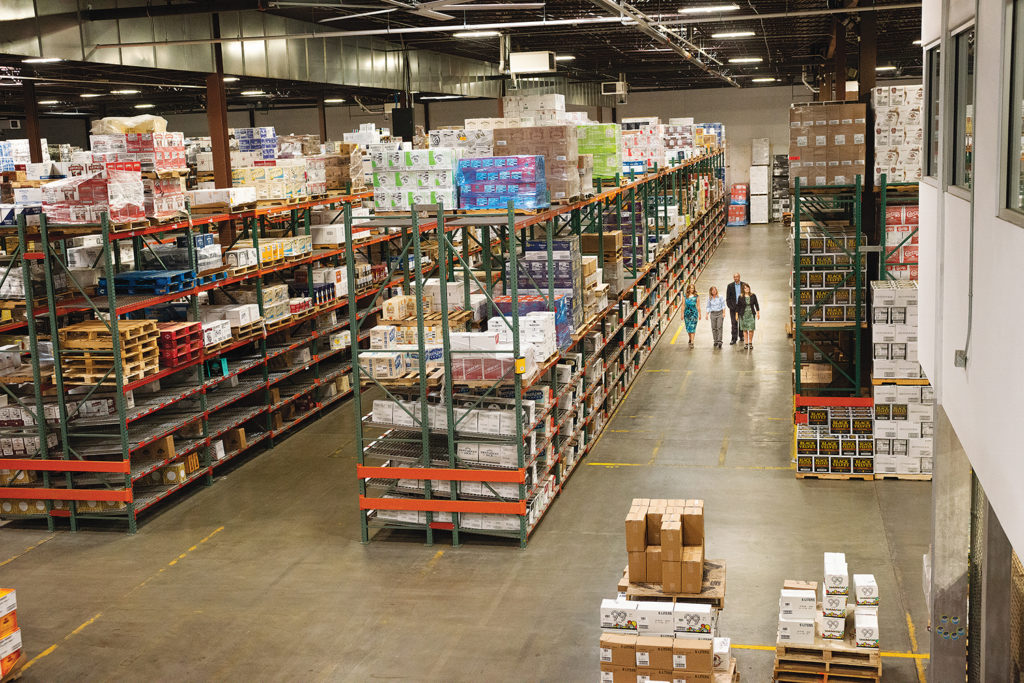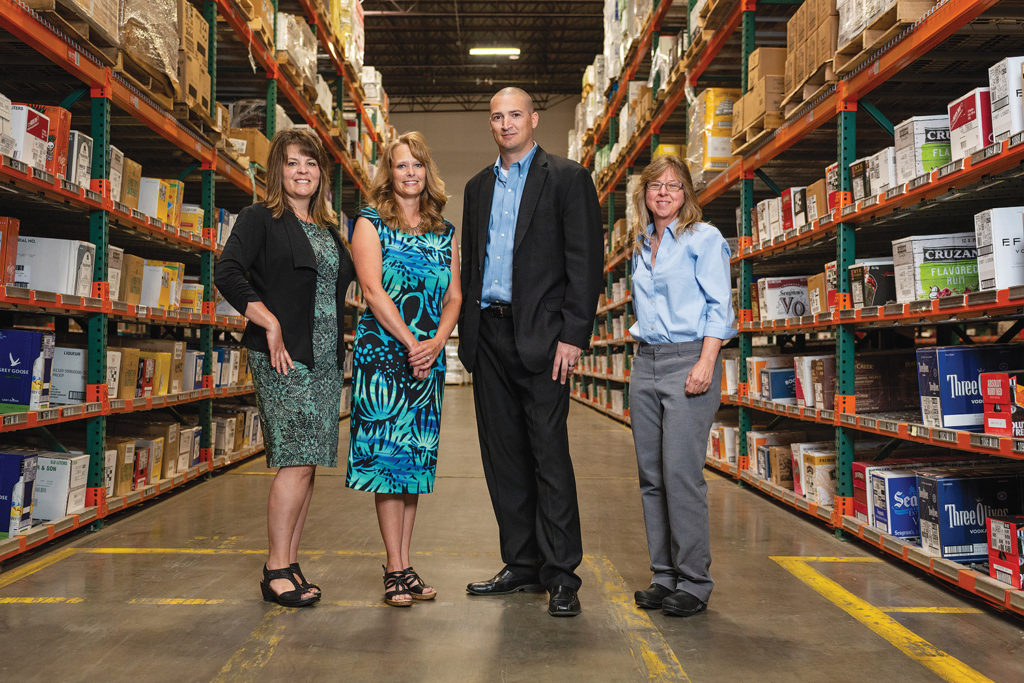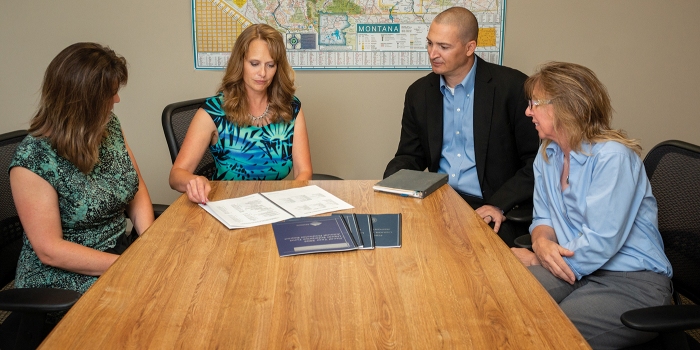Public safety is paramount for any alcohol regulatory organization, including Montana. The state’s ABC Division administers 97 agency liquor stores, operates a warehouse that distributes alcohol throughout the state and oversees licensing for on-premise operators and in-state producers.
The division prioritizes efforts that promote safe consumption. “In alcohol you have such a unique product,” says Division Administrator Becky Schlauch. “There’s the potential for public harm, but used safely it provides enjoyment for the public.”
There’s also the issue that “Montanans don’t always like being told what to do,” she adds with a laugh. “But making sure alcohol is served, consumed and sold responsibly is very important.”
Schlauch became administrator in July of 2017. She’s new to the alcohol industry — though not to government service. Prior to this position she served as administrator for the Business and Financial Services Division for the Montana Department of Public Health and Human Services.
Protecting the public was a focus for Schlauch in that role as well. She earned a Governor’s Award for overseeing Medicaid expansion that brought health insurance to an additional 70,000 Montanans. Today her job includes overseeing a number of programs that help maintain public safety in regards to alcohol.
Safe and Secure
Among the public safety efforts the division takes most pride in is its Alcohol Education Summit. Held every other year, the event provides learning opportunities for professionals in alcohol abuse prevention, with sessions and speakers. The most recent summit took place in August of 2017 in Big Sky.
The several hundred attendees included law enforcement, judges, DUI task forces, local and county officials, attorneys, concerned citizens and officials from other states. More than 40 presenters spoke during the summit, including subject experts from the Montana Departments of Transportation, Public Health & Human Services, Justice and Revenue, as well as law enforcement and various state, local and national organizations.
The three-day summit received funding in part through NABCA grants.
“It was a highly successful event that had participants already looking forward to the next summit in 2019,” says Liquor Operations Bureau Chief Steve Swanson, who’s been with the division for 17 years. “The event promotes public and private partnerships.”
The Montana division also oversees state-mandated safety training. Passed by the state’s Congress in 2011, the law requires anyone who serves or sells alcohol — including immediate supervisors and licensees — to take state-approved alcohol sales and service training classes within 60 days of hire, and every three years thereafter.
“Obviously it’s a huge public issue to keep alcohol out of the hands of individuals who are not of age,” Swanson says, “and these classes also ensure that sellers and servers are not over-serving people. That could lead to accidents down the road.”
Private companies provide the training, which is first approved by the division. Staff ensure that Montana laws are represented accurately. Currently the state has 14 different providers, giving people options for training, along with classes available online.
To help prevent underage access to alcohol, the division also works with local law enforcement on compliance checks. State grants passed in recent years have increased funding for these checks.
The division also works with the Montana Department of Transportation on the state’s “Vision 0” initiative. “That’s our goal of zero injuries or fatalities on the Montana highways,” Schlauch says. The program includes public safety awareness promotions.

Quota System
Control states constantly face political pressure to change. Perhaps the most controversial component of the Montana division, one that regularly attracts legislative attention, is the quota system for licenses.
The number of licenses available in every county or city is based on population size. A city can have five full licenses for the first 3,000 residents, for instance, and then another for the next 1,500. That means new licenses become available as populations grow.
In the past, people who wanted to purchase these newly obtainable licenses had to enter a lottery. Winners received the right to buy. Legislation passed last year, however, altered that system.
Now it’s a state-run auction. New licenses go to the highest bidder. Minimum bids must be three-quarters of the market value of the license, which is determined by the Montana Department of Revenue.
In cities, that can get expensive. Owners of existing licenses can sell them at will, and several licenses in Missoula recently hit the market at around $750,000 each.
“It’s generating a lot more money, which was the goal,” Schlauch says. Initial estimates forecast that the change from lottery to auction will raise around $3 million annually in additional funds for state coffers.
The new law also got rid of “combined quota areas,” which affected twelve incorporated regions. Now these towns and cities will have their own quota for available licenses.
With the new law came a much-needed switch to modern technology. “The lottery process for licenses was a paper process that took a lot of resources to conduct,” says Liquor Licensing Bureau Chief Denise Brunett. “We’re excited about the online component of the auction. It’s a lot more streamlined and user-friendly.”
But some Montanans would like to remove the quota system altogether. “Every legislative session that comes up,” Schlauch says. “But there’s already so much money in the licenses that the quota’s probably not going away anytime soon.”
In the meantime, the division has plenty on its hands with the switch to auctions. “That was a big change last year to how we do things,” Schlauch says. “We’re still figuring out exactly how all of it will work.”
Helping Producers
Montana, like other states, has experienced a boom in recent years in its number of alcohol producers. The craft movement has generated immense consumer interest in local wineries, breweries and distilleries, which has driven growth for all three.
“Ten years ago we hardly had any producers,” Schlauch recalls. “Now we have more than 100. Breweries and distilleries are growing by leaps and bounds, while wineries are staying steady.”
Which means plenty of work for Brunett and her office. “It’s an exciting and moving industry right now with a lot of new Montana manufacturers who want to know what they can and cannot do,” she says. “They’re always curious now to how they can make their businesses unique.”
One of the requests her office receives is how a manufacturer can link up with a local restaurant, outdoor festival or nonprofit event. Brunett and her staff guide them through those opportunities — where legal. “We’re seeing a lot of great collaborations out there now,” says Brunett, who’s been with the division for five years.
There are tricky aspects of the law, particularly for distillers. A distillery that wants to pour product at a public tasting must buy their own bottles from the licensee holding the event.
One town contacted the division about whether it could hold a distillery festival. Unfortunately for this would-be host, Montana’s strict laws governing distillers mean spirit-makers cannot do everything that a brewer can.
A lot of inquiries come in regarding producers providing onsite pours. Current Montana laws are strict about manufacturers serving their own products on-premise.
Breweries making less than 100 barrels per year can only hand out samples. Producers between 100-60,000 barrels are limited to 48-ounce samples, which they are allowed to sell. Distilleries can only provide two-ounce samples, while wineries can provide their wine for consumption onsite, but only free of charge.
For obvious monetary reasons, many producers want to change those laws to permit taprooms and similar sales at distilleries and wineries. “It wouldn’t surprise me at all if that came up soon legislatively,” Brunett says.
Production quantities and hours for manufacturers are also limited. Schlauch believes this also will come up at future legislative sessions as businesses seek to expand their production capabilities.
Inside the Warehouse
As a distributor, the division maintains a 100,000-sqaure-foot alcohol distribution warehouse in Helena.
The staging area comprises about a quarter of that, says Liquor Distribution Bureau Chief LaNor Stigen, while the rest is picking locations and storage. On average the warehouse holds about 3,000-4,000 SKUs.
Among the most recent upgrades for the warehouse is voice picking. Montana implemented this upgrade about two years ago. Before that the pickers relied on handheld scanners.
New technologies like voice picking commonly take times to set in. Gains in efficiency “have not been as much as we thought at first,” Stigen admits, “because the staff had been so efficient with their scanners. But with voice picking we will get there soon enough.”
Stigen recalls when the warehouse, years ago, switched from paper picking to the scanners. “It took us a while to get on board with that too,” she says. “Guys get comfortable with the devices they are already using.”
The warehouse staff includes nine full-timers on the floor, plus five full-time administrators. Competition for jobs is immense. “There’s always a huge pool of applicants,” Stigen says. “A state job is one that everyone wants in Montana.”
Staff on the floor work four 10-hour days, giving them a three-day weekend. The state job provides them good insurance, retirement packages, sick leave and vacations.
Camaraderie and teamwork are also part of the appeal. “I’ve been here for 11 years and the atmosphere is great,” Stigen says. “Like anywhere we have our ups and downs, and around the holidays is always a time of pressure. But everybody really pulls together in times of need and gets the job done.”
“It’s a fast-paced environment,” she adds, “and everyone seems to take care of each other.”
In early 2010 the warehouse carried out an extensive renovation project. “We looked at how everything was organized,” Swanson recalls. “We did a lot of re-racking. We hired beverage industry experts who gave us a lot of great advice as well.”
Changes included keeping lighter, half-gallon cases together so that they become uniform stacks. This makes it easier for staff when building stacks.
Prominent items move to the front in the warehouse, along with the heavier items, so that it’s more efficient to load both onto the trucks.
“As sales grow and change, the challenge becomes how to best utilize our warehouse space,” Swanson says. “You need to continue to look at how you can manage your space more efficiently.”
The warehouse lists all of its SKUs under a special order system that has two different categories. The most recent Montana Liquor Price Book listed about 1,300 SKUs on the “Regular List.” Such products are the highest-selling in the state, available year-round and have been purchasable in Montana for at least six months. They’re also available to licensees at an 8% discount.
The other classification is Maintained Special Order products. These are the highest-selling special order items, available year-round. The last price book contained around 2,400 of these products.
Stigen says this system is recalibrated every six months.
“This gives suppliers an incentive to get their products onto the regular list,” she adds. “We’ll often get requests from suppliers to promote their products. They’ll ask for an agreement between us and them to allow their brand reps to promote at agency stores or on-premise.”

What’s Next
Medicinal cannabis has been legal in Montana since 2004. Is broader legal marijuana on the horizon for this state?
“There’s been talk of recreational laws,” Schlauch says. But so far it’s been largely that: just talk. An initiative in 2016 that would have brought the issue to voter referendum failed to garner enough signatures to make the ballot.
Montana, meanwhile, does not allow products with names that reference cannabis. Schlauch is not sure what the future holds in her state for legalization or regulation. “We haven’t really thought about all that yet,” she says.
In the meantime, Schlauch and her staff remain focused on the myriad of other important issues at hand.
“I’m really excited to be where I am,” she says. “My goal is to be able to keep up with all the changes in the industry. I’ve got such a great staff that’s so knowledgeable, and it’s great to go into work every day with a staff like that.”










